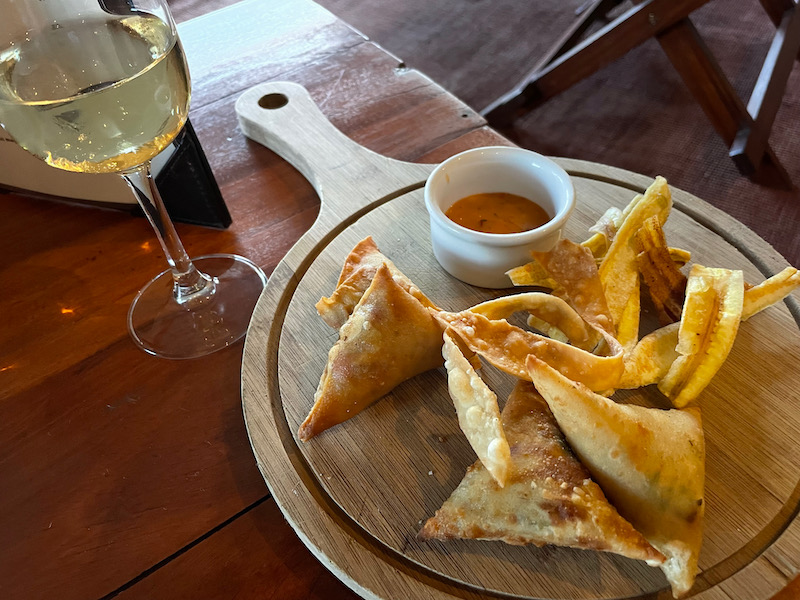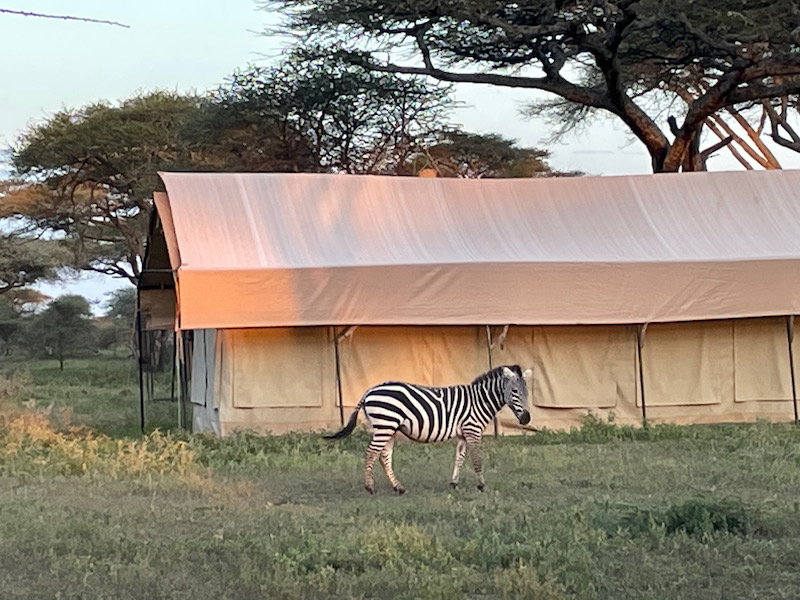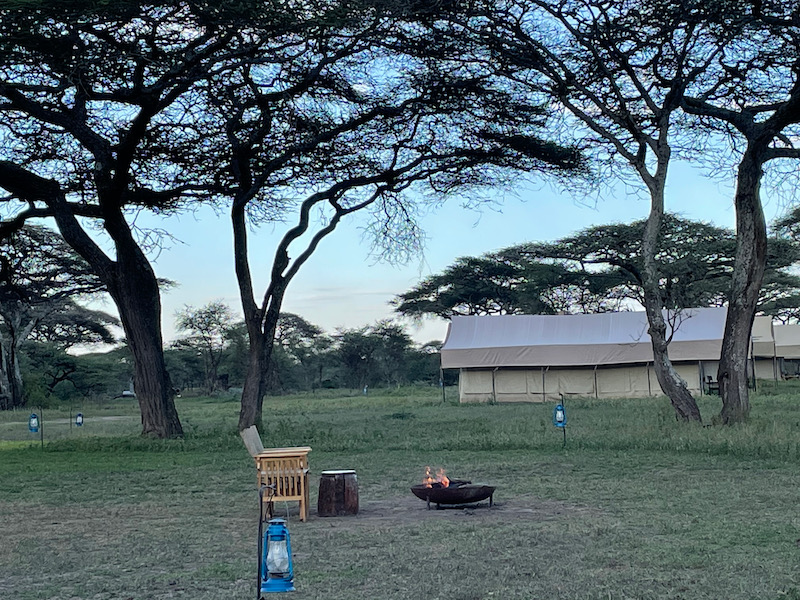Our Blog - Safari 2023 - Ndutu area Day 1, Tanzania
While we had seen quite a few animals in Arusha, Lake Manyara, and Ngorongoro .... the number of animals we saw in Ndutu was just over-the-top. And Ndutu was the only place on this trip that we were able to go off-road, which allowed us to get much closer to the animals than before. You'll see that especially with some of the lion pictures, where the lions were almost literally a couple feet from us.
I mentioned earlier that this trip was timed based on the annual migration of zebras and wildebeests. Here is an interesting picture that we saw at one of our hotels that shows that circular migration and timing. If you look in the lower-right/lower center-right, you can see the Ngorongoro Conservation Area listed, and above that, you can see the migration that comes from the Sergengeti down into the Ngorongoro from December to May. It seems that the migration is running maybe a little late this year since it has been dryer in the Ngorongoro area and so there is less grass for the migrating animals. Right above the two animals next to the Ngorongoro name is a little airport called the "Ngutu Airstrip" (which is the Ndutu area), which is as far North as we got.
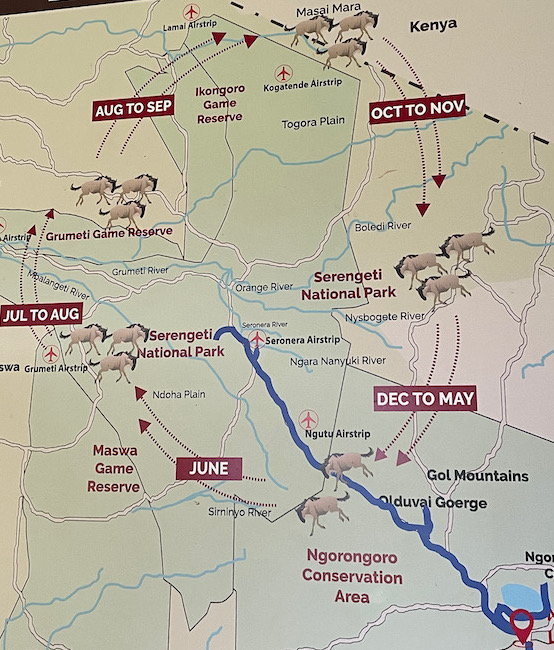
We stopped along the edge of a lake and saw a flamboyance (which I just learned is the correct term for a group of flamingoes). There are two types of flamingo in Africa: the Greater Flamingo (which is more pink) and the Lesser flamingo (which is more white). While it isn't easy to pick them out from pictures, with the binoculars it was quite easy to see the difference. In the video, you can see 3 flamingos flying low over the lake, which for me was interesting because I almost never see flamingos actually flying, just standing and walking in the water.
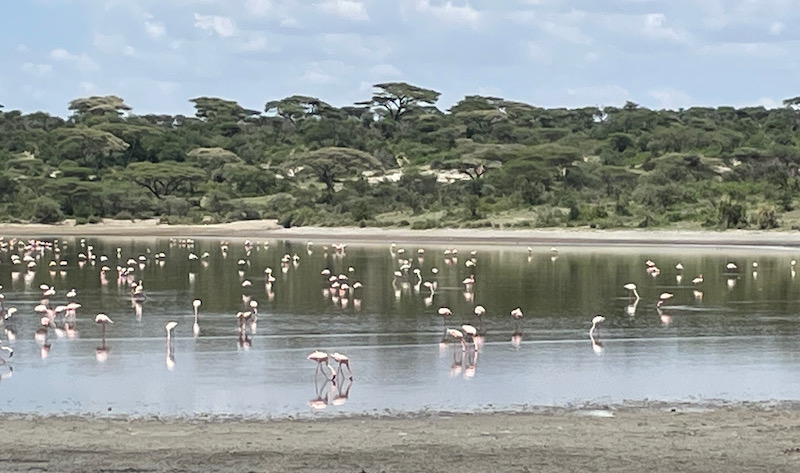
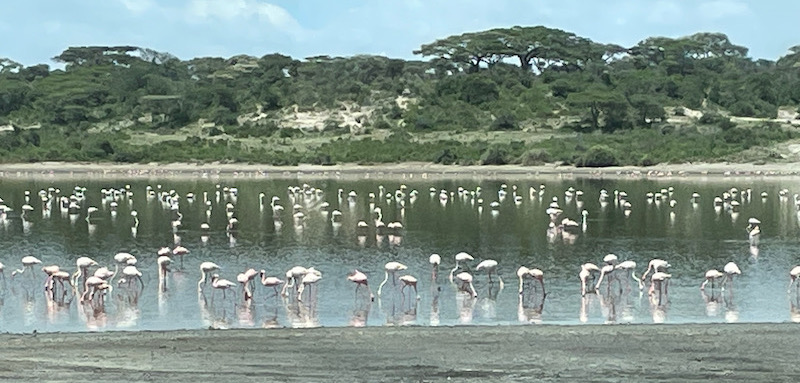
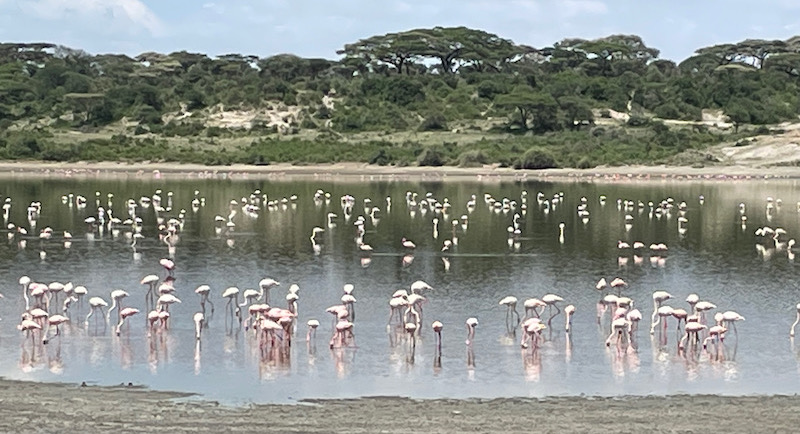
We saw lots of giraffe, as you will see. The giraffe is the tallest living terrestrial animal. They normally live in herds, either females with their offspring, or herds of unrelated males. Males have a social hierarchy which is determined by bouts of combat called "necking" (which interestingly enough, I got a video of that you will see later). While most of the time, we see them eating from the tops of trees, they are also above to bend their neck down to eat from shorter bushes as well.
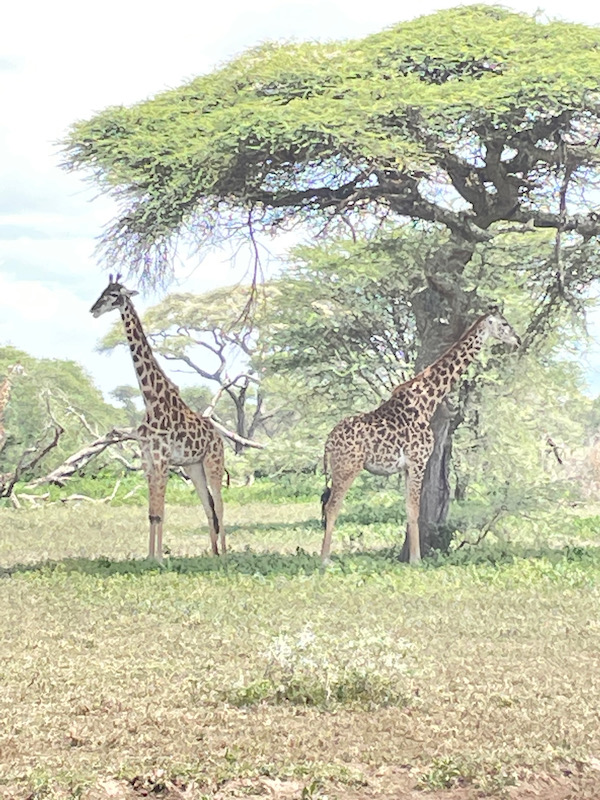
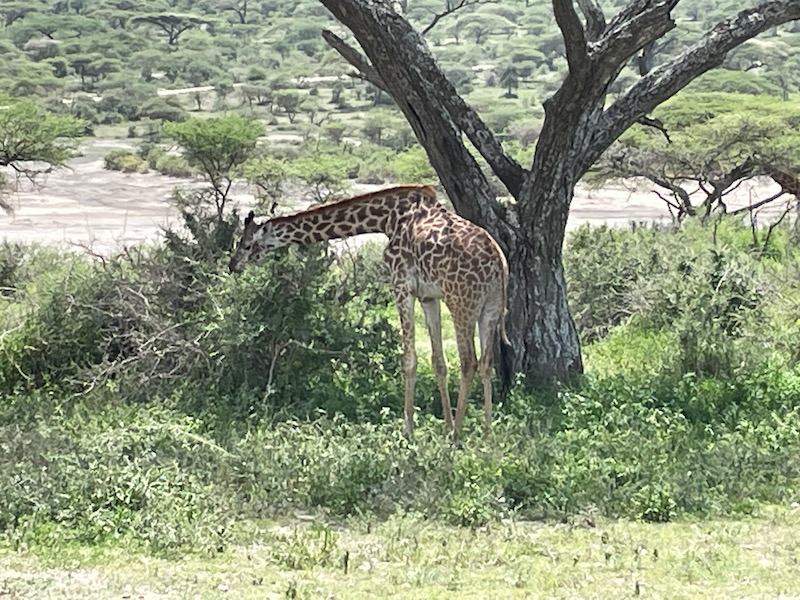
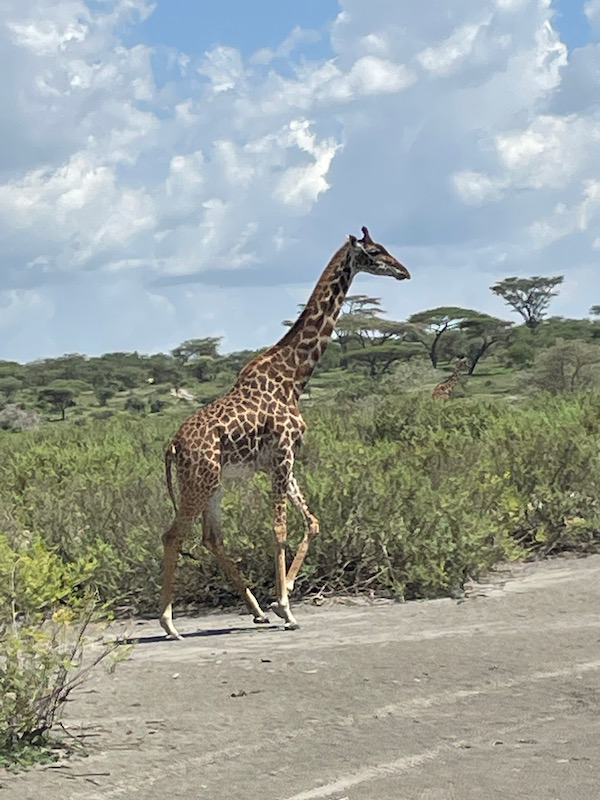
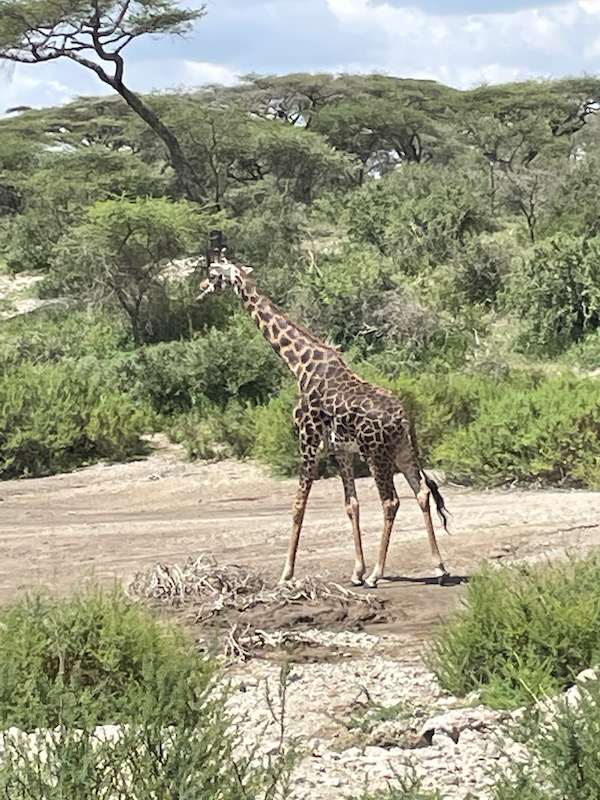
Here we got close to a slightly larger group, and were able to drive up quite close to them. I really enjoyed seeing them walk, since I find their little "swagger" to be very graceful when they walk.
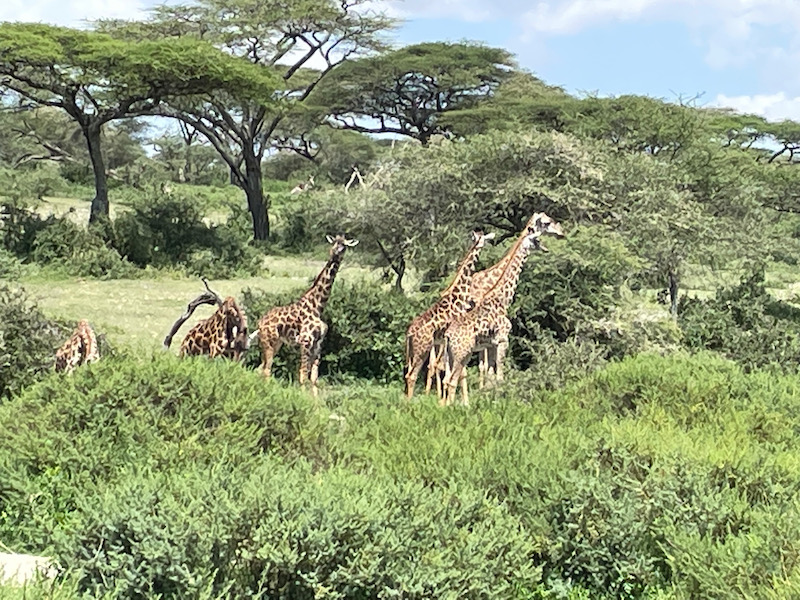
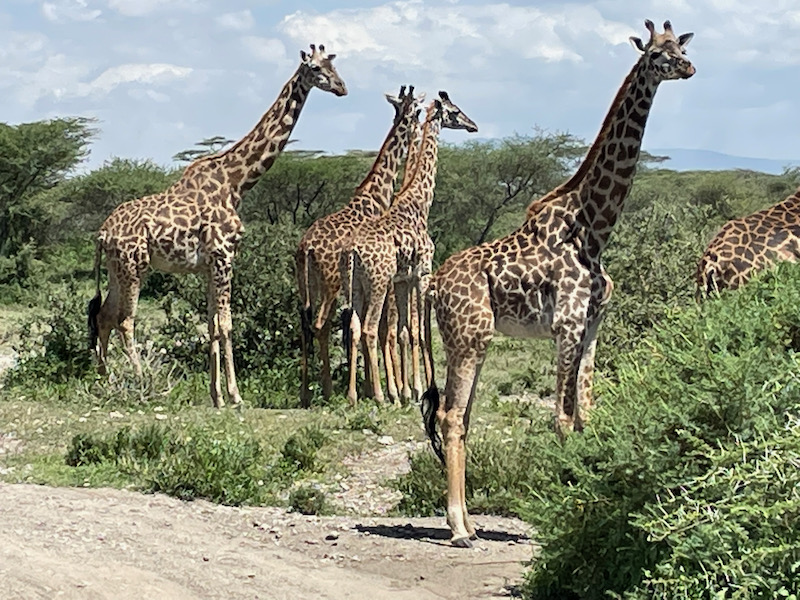
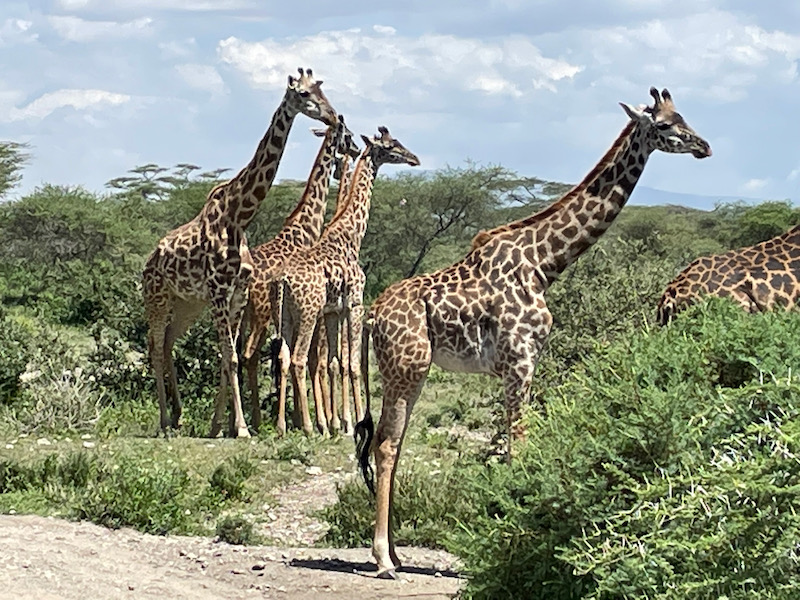
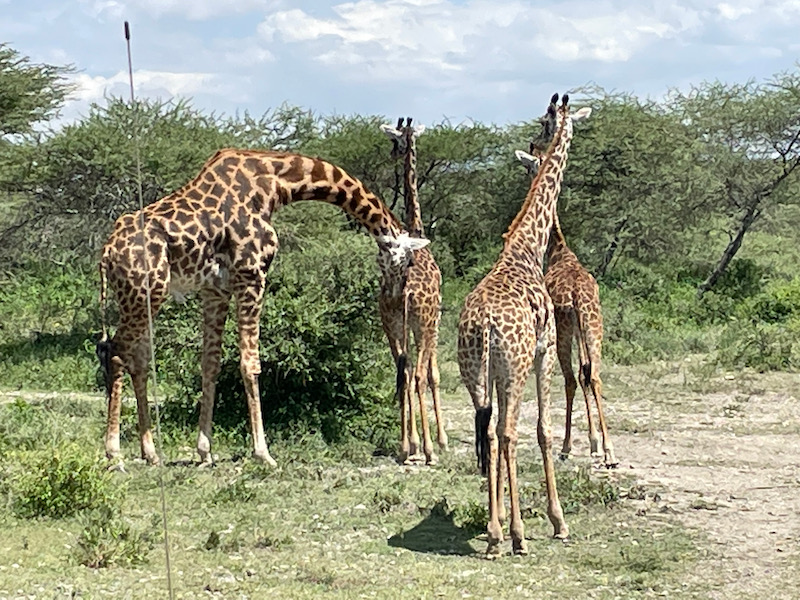
Then one of them seemed to be a little curious of us and decided to look straight at us, and seemed to pose for the picture!
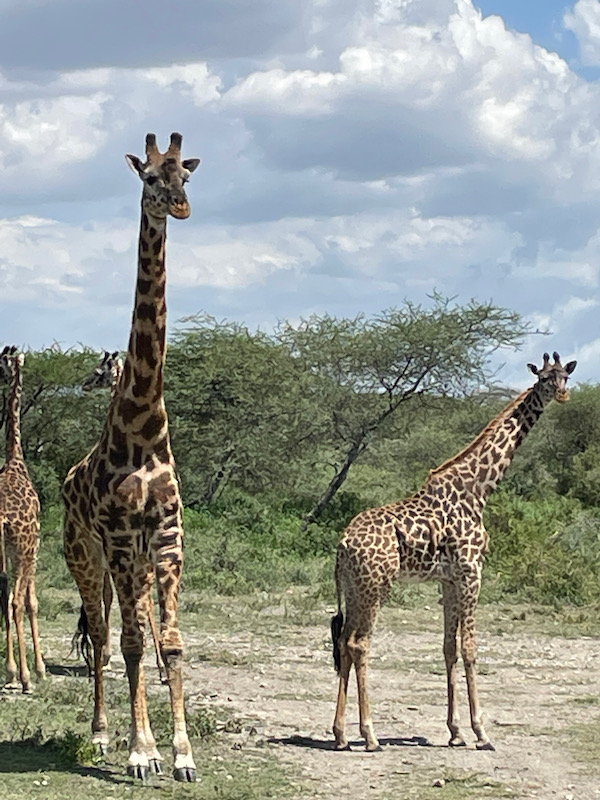
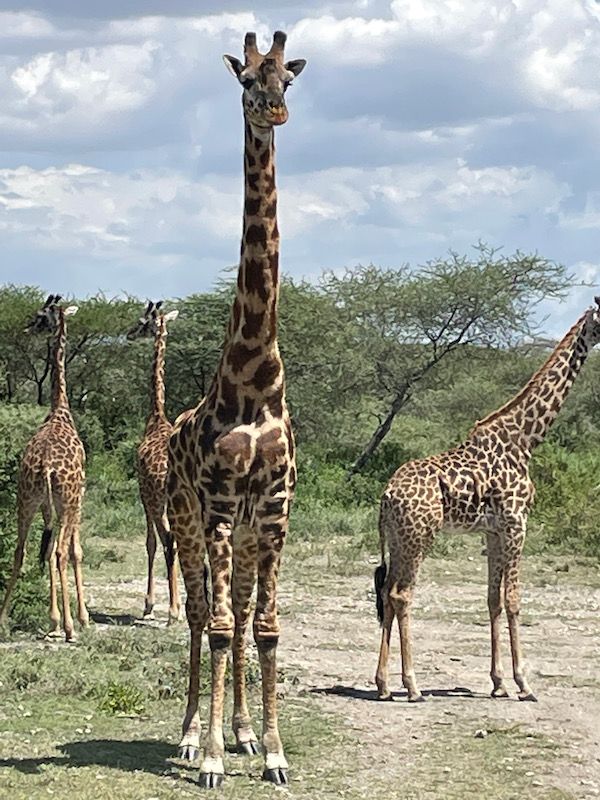
In this video, you can see a couple of them actually running across, including a younger (and smaller) giraffe, and one of the largest giraffes in the herd also walking.
These are the thorns of the Acacia tree, which make up a good percentage of the giraffe diet. You may wonder how they can manage to eat the green leaves of the tree with all of these large thorns (well, we did!). They have a specially adapted tongue and mouth that allow them to eat from the thorny branches without getting poked. They also have thick sticky saliva that coats any thorns that are consumed to protect their mouth and digestive tract. Giraffes can eat upwards of 60 lbs of acacia leaves and twigs daily.
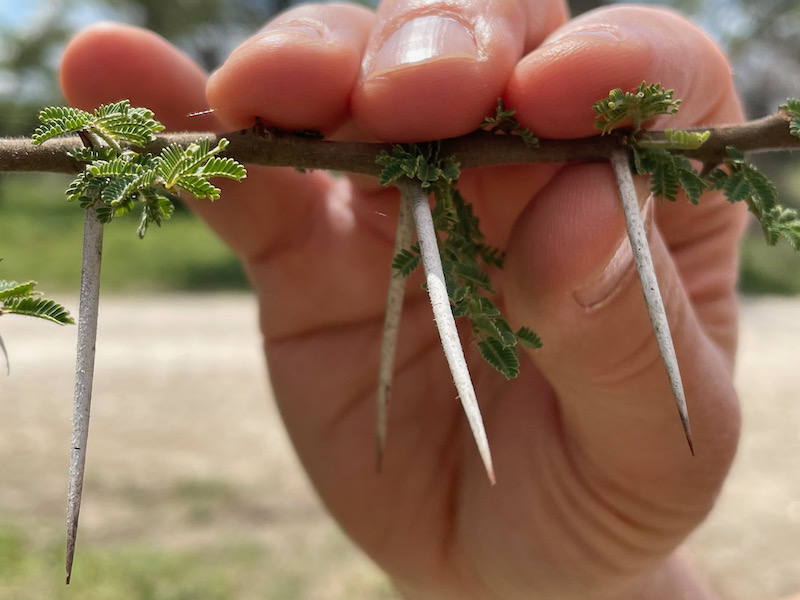
Zebras and Wildebeests make the annual migration. If you look at the migration, they come down South to here, give birth, and then head back around to the North. There are 2 river crossings: the first in the July/August timeframe as they move from the Serengeti to the Grumeti Game Reserve. The second is in September/October when they cross the border from Tanzania into Kenya at the Masai Mara. Here are just the first of many zebras and wildebeests that we saw.
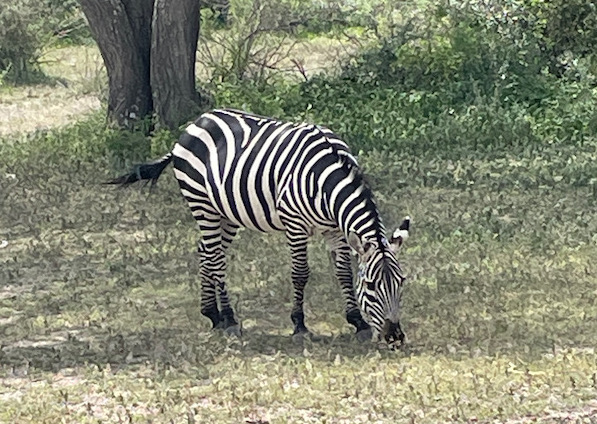
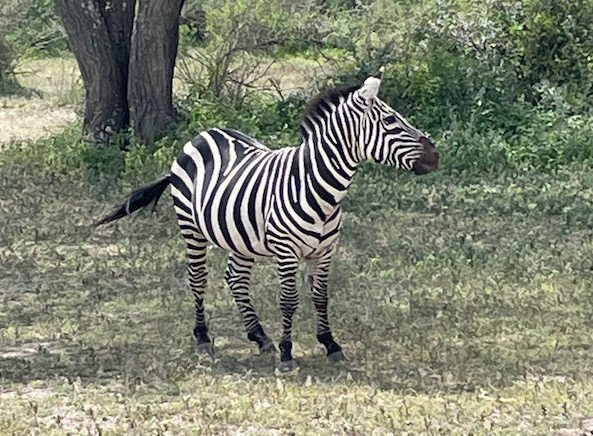
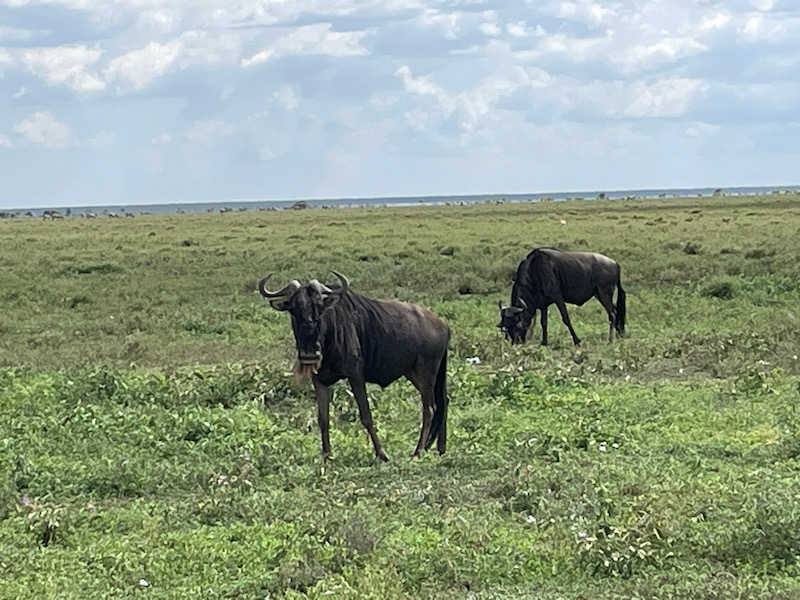
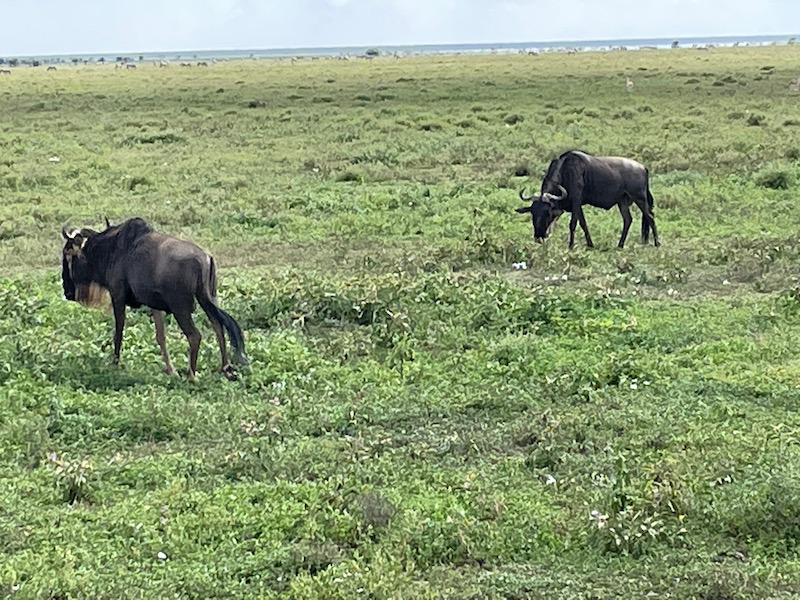
There were lots of birds, with some of the scavenger and predator birds resting at the very top of trees, where they can get a good view of everything around them.
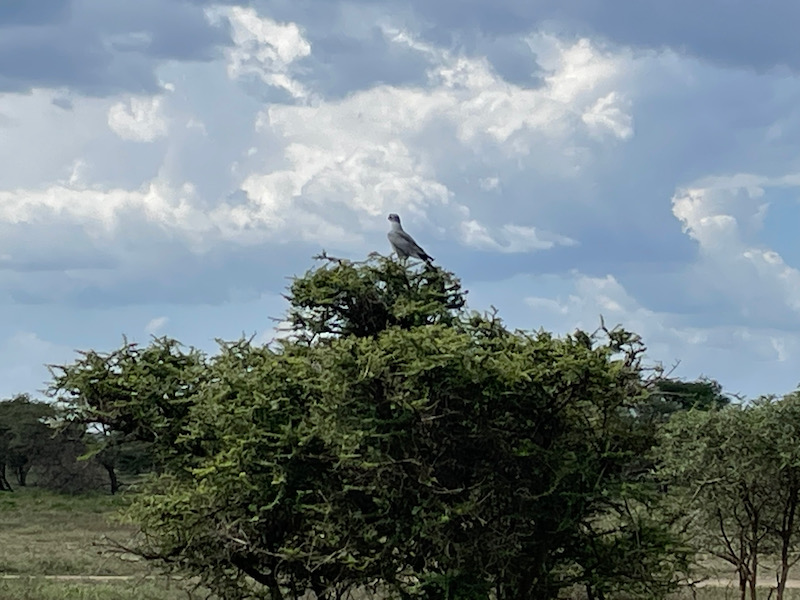
Here we started seeing lions, and actually saw quite a few of them. One of the amazing things about being able to go off-road was how close we could come to them. Most of their hunting takes place at dawn, so by the afternoon, they were resting in the shade of a small tree. This first set was a group of male lions, which are called "coalitions". You can somewhat tell that they had eaten something large this morning in the pictures, but it is REALLY obvious in the video, when the middle lion gets up, walks over, and lays back down. Look at how round that belly is!!
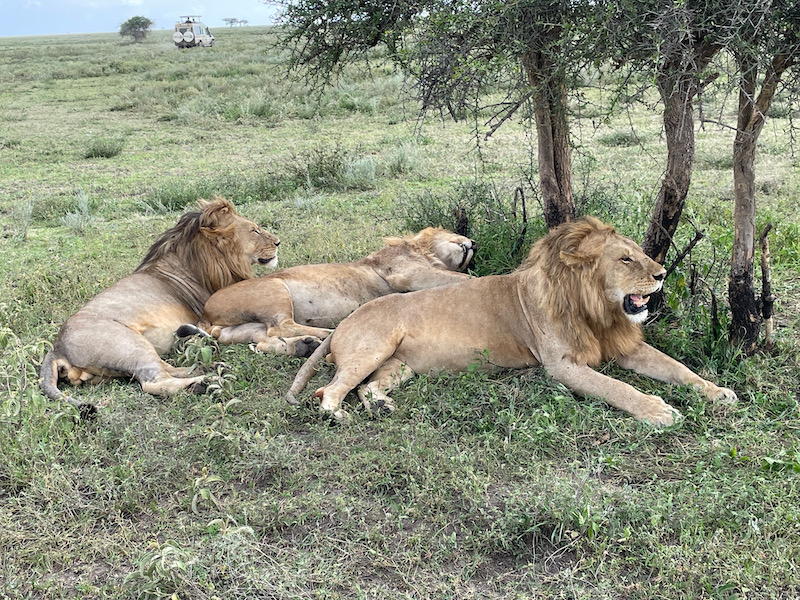
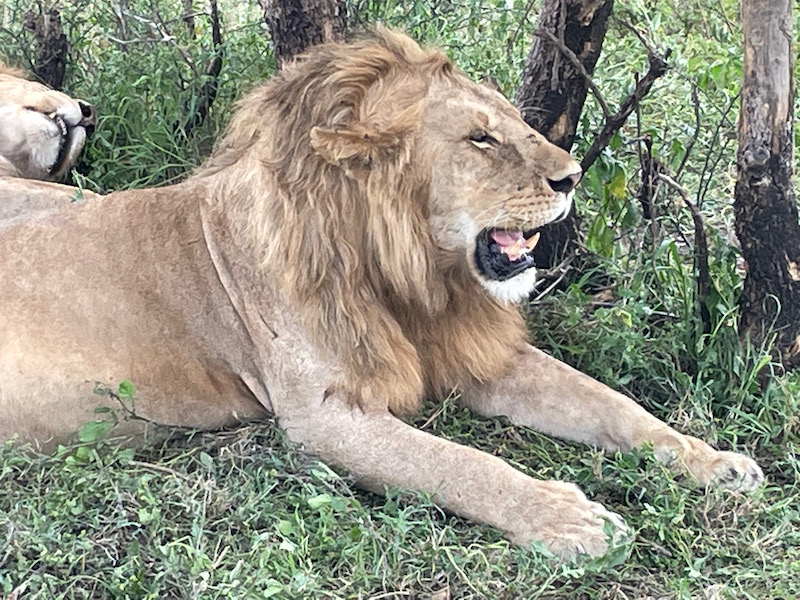
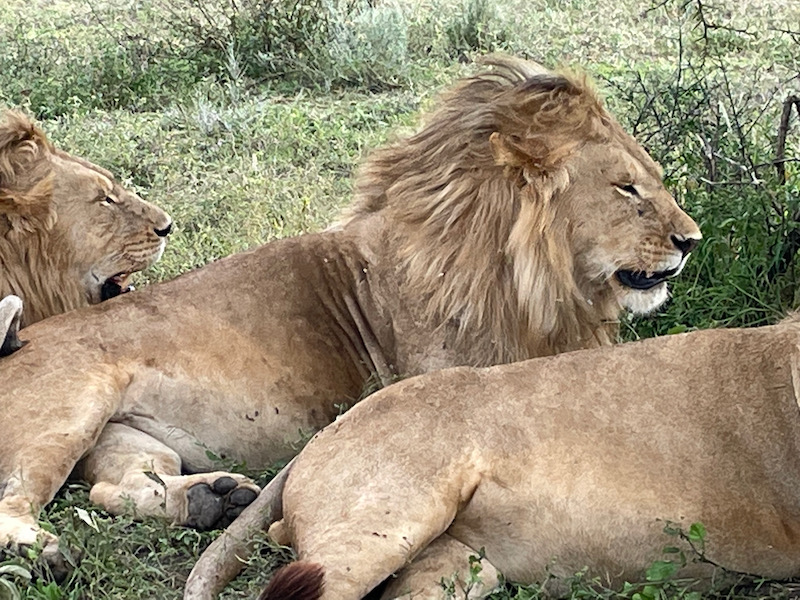
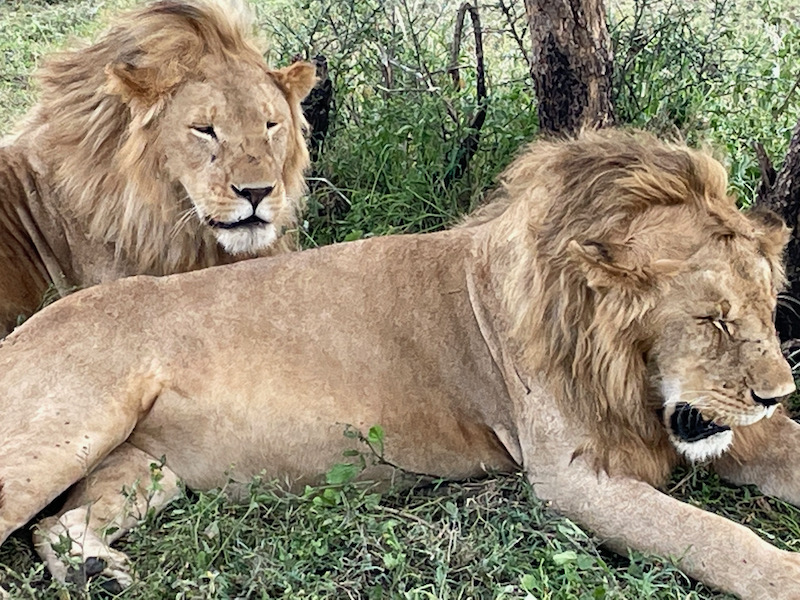
The lions were probably my favorite animals to see during the safari, which you can tell with the number of pictures that I took (which is about 4x the number that I actually show on the blog!).
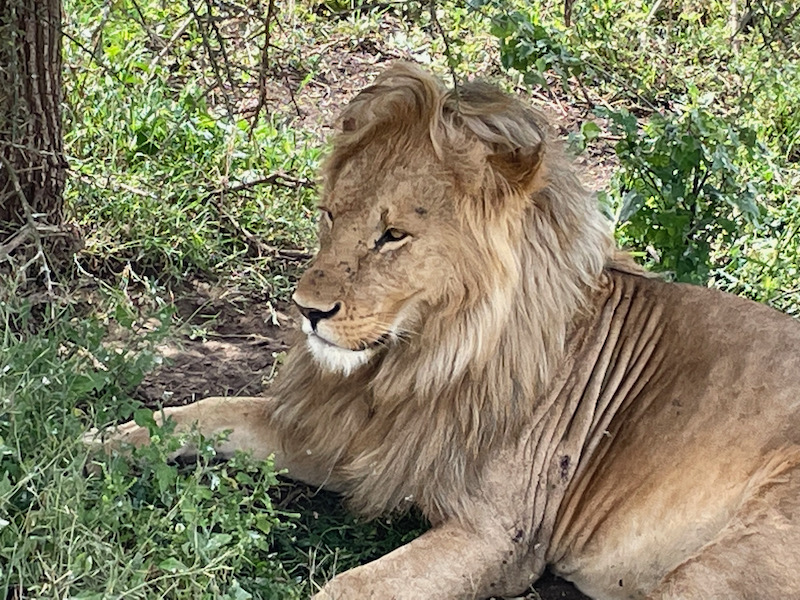
Nearby, we found a group of 5 female lions. In general, it is the female lions who do the hunting, with each lioness getting a position to either stalk the prey for the attack, or hanging a small distance away to capture prey that are trying to flee. They have very low stamina and so it is necessary to stalk their prey before attacking. A lioness needs about around 10 lbs of meat per day while a male lion needs about 15 lbs. That may seem a lot, but when you take into account the fact that some of their prey (wildebeest and zebra) can weigh between 300-700 lbs, it really isn't that much. The lions will gorge themselves and eat 60-70 lbs of meat in a session (hence the sleeping with large tummy's). While we were watching, one of them decided to roll over with their tummy up ... reminded us of how Lucy likes to sleep!
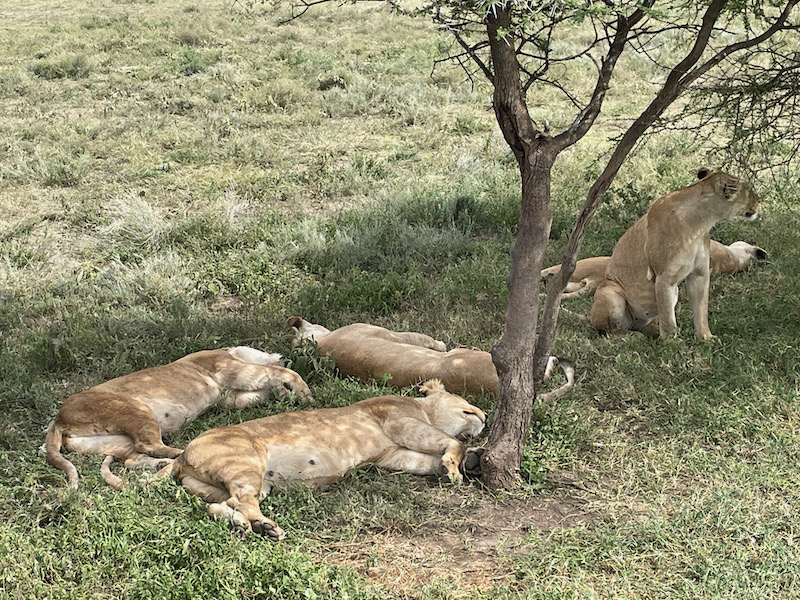
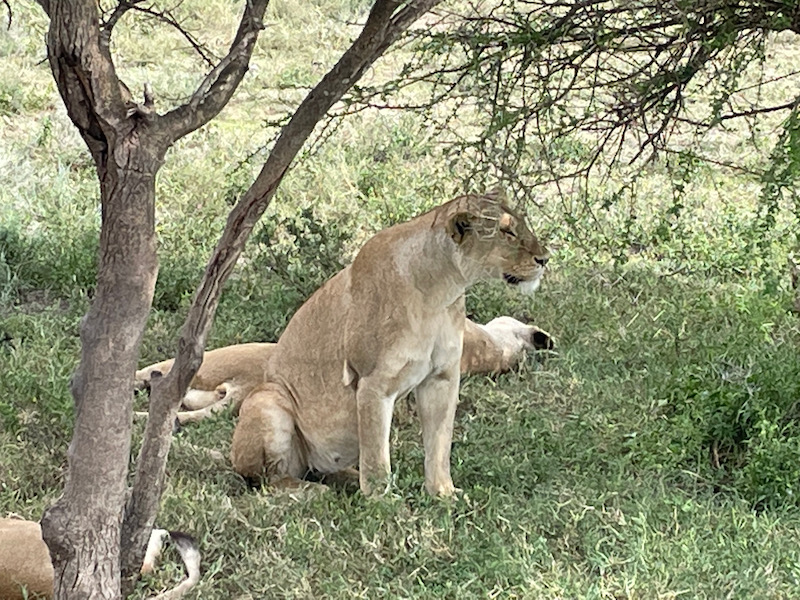
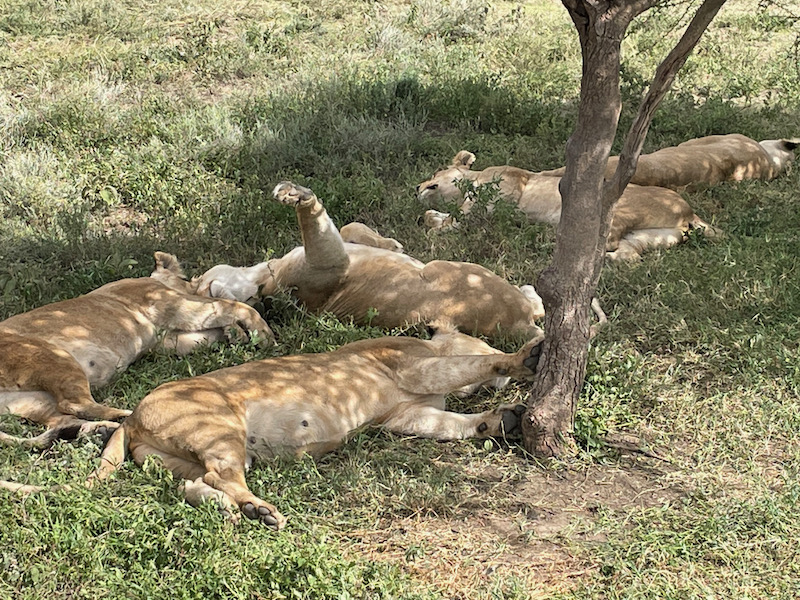
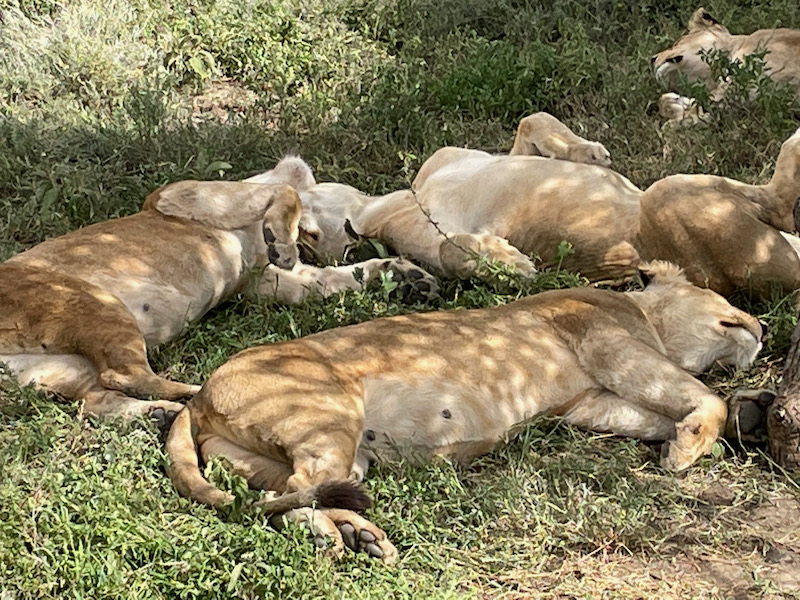
And then back to the male lions again .. this time we got a bit closer to one of them
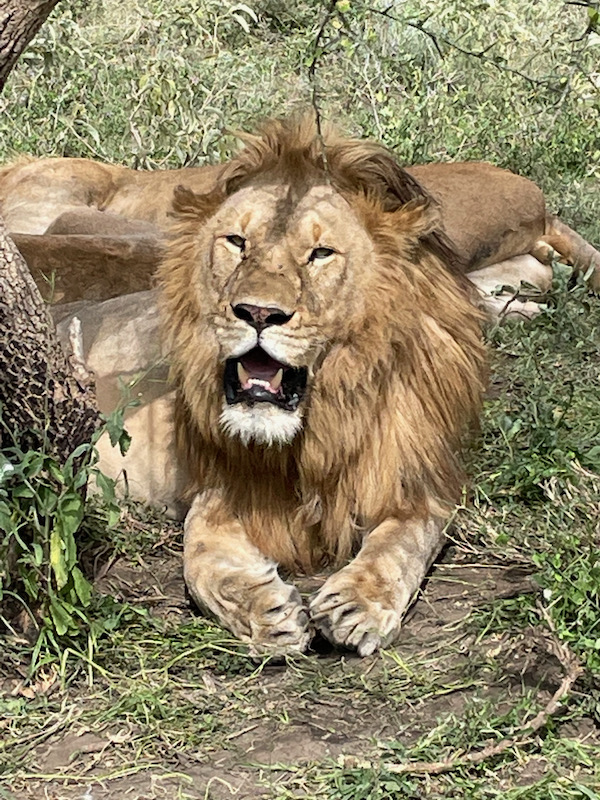
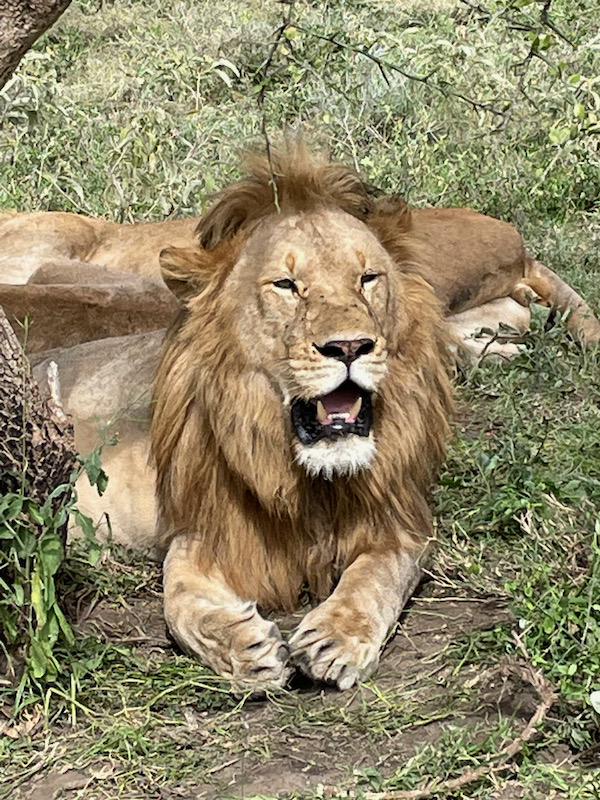
I'm not exactly sure if this is what I thought it was, but it looks like a big rain cloud dropping rain on the right-hand side but not on the left-hand side, with a very defined line. If it isn't rain ... well ... it looked cool anyway.
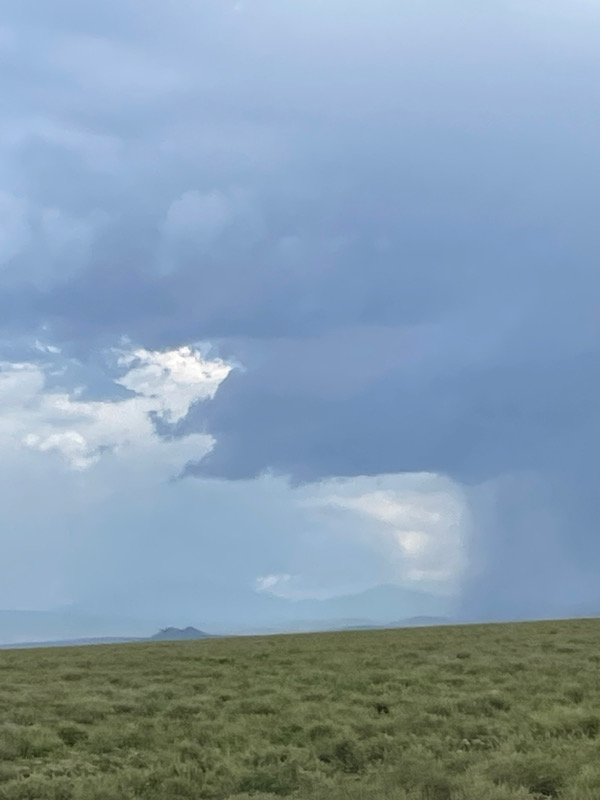
While we never got to see a leopard during the trip, we were lucky enough to see a female cheetah and 3 cubs. We tried not to stay around her too long since our guide mentioned that they can't really see at night (unlike some other predators) and so they must hunt during the day. If the trucks remained around her all day, she wouldn't be able to go hunting and provide food for the 3 cubs. The mother was laying down (to start with) in the lower grass while the 3 cubs were hiding in a small patch of taller grasses. The little ones are a bit hard to see so I will try to explain.
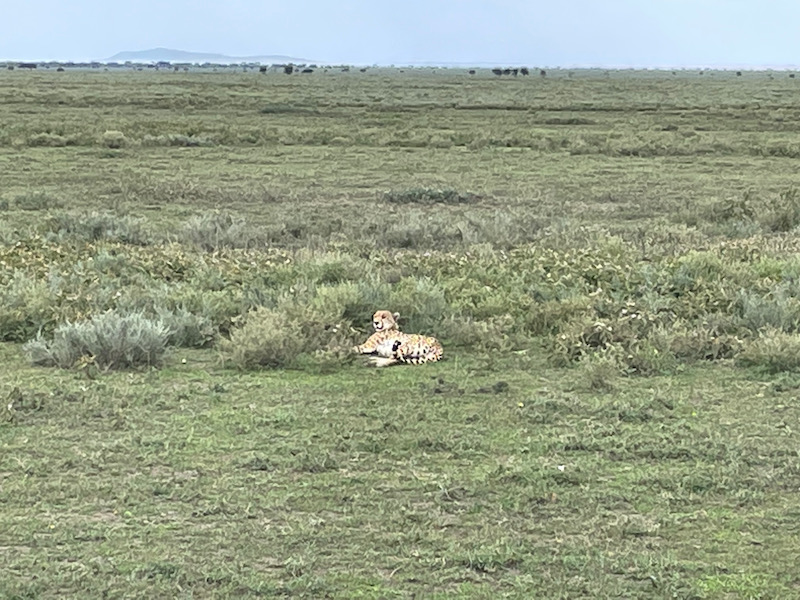
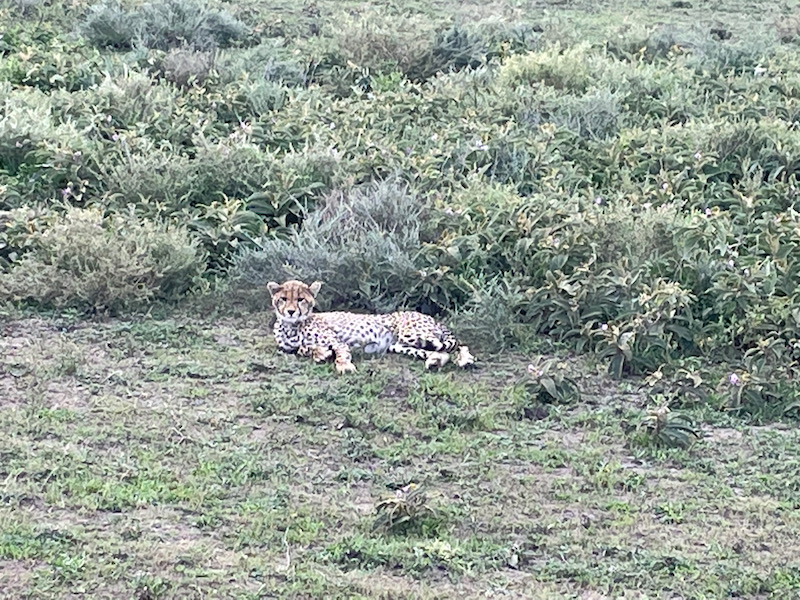
Here you can see 2 of them ... in the first picture: one with only the face visible (right in the center) and the other sitting with the back visible in the upper-left. In the second picture, both are now close together center-right with their backs visible.
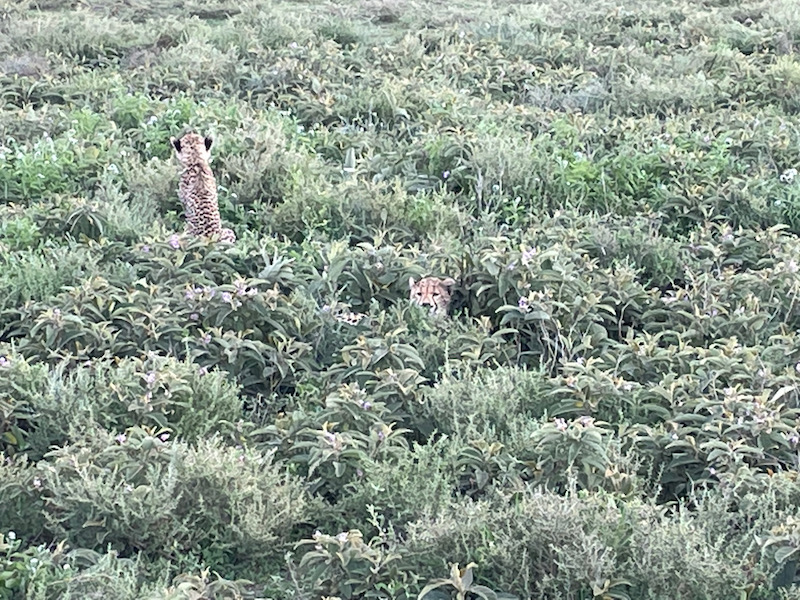
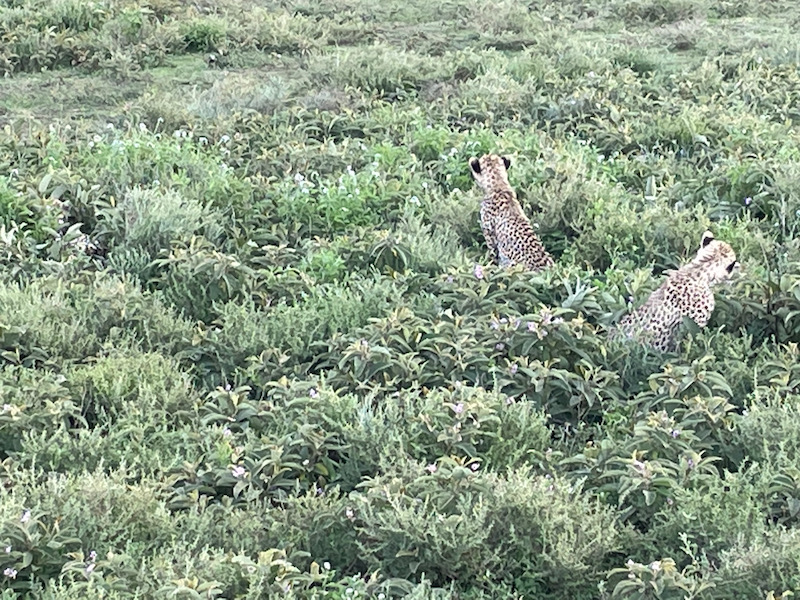
In this video, the mom decides to move and at the end, you can see how she is almost totally hidden in the grass.
They are such graceful cats!
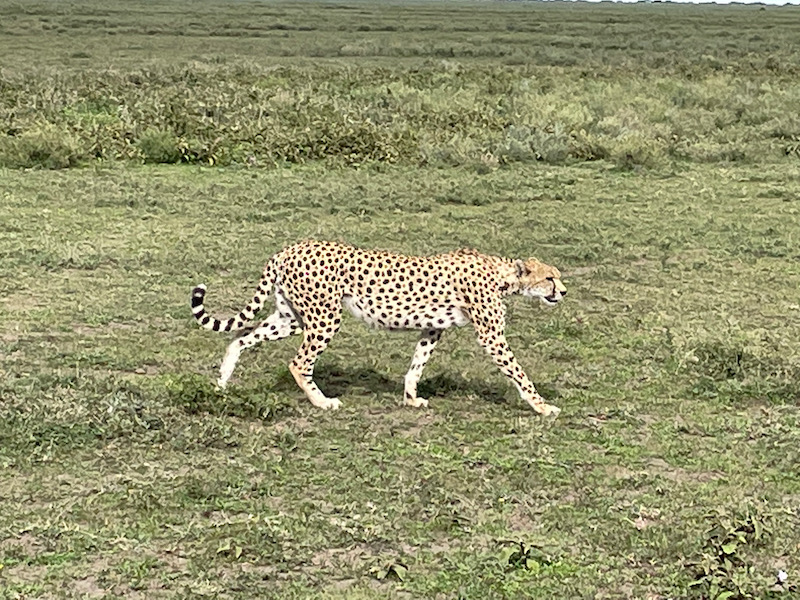
Then the mom decides to move and we got a nice video of her walking by
While I don't want to be too morbid in my blog, but there were reminders everywhere that these are, in fact, wild and savage animals. Sometimes we were able to determine what type of animal it used to be based on a skull that might be left, or even worse, skin on a leg. In this case, it was just a carcass.
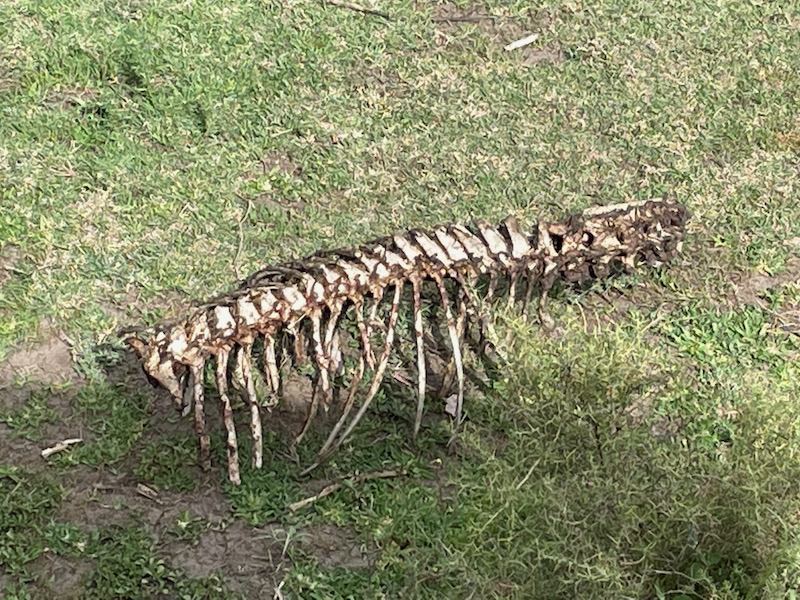
A dik-dik is a small antelope, weighing 6-12 lbs. They get their name from the alarm calls of the females. You will almost always see them in pairs, since they are monogamous and mate for life.
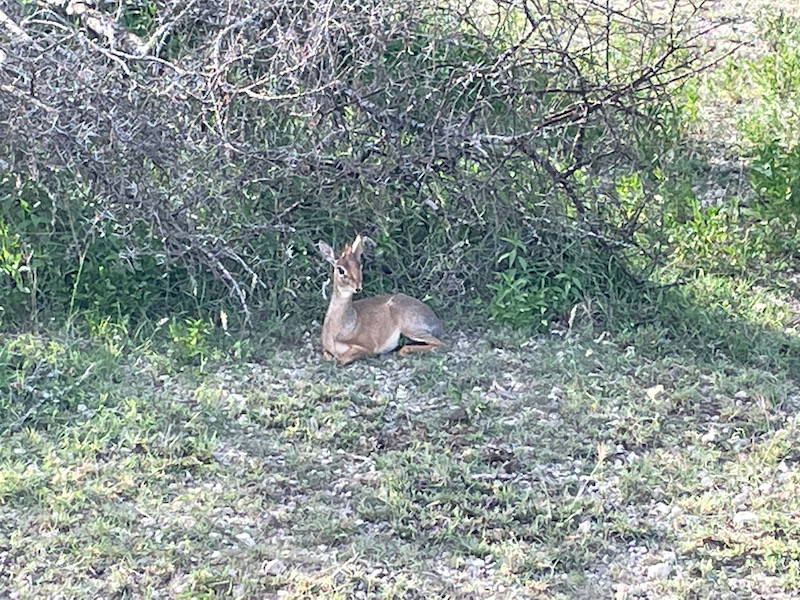
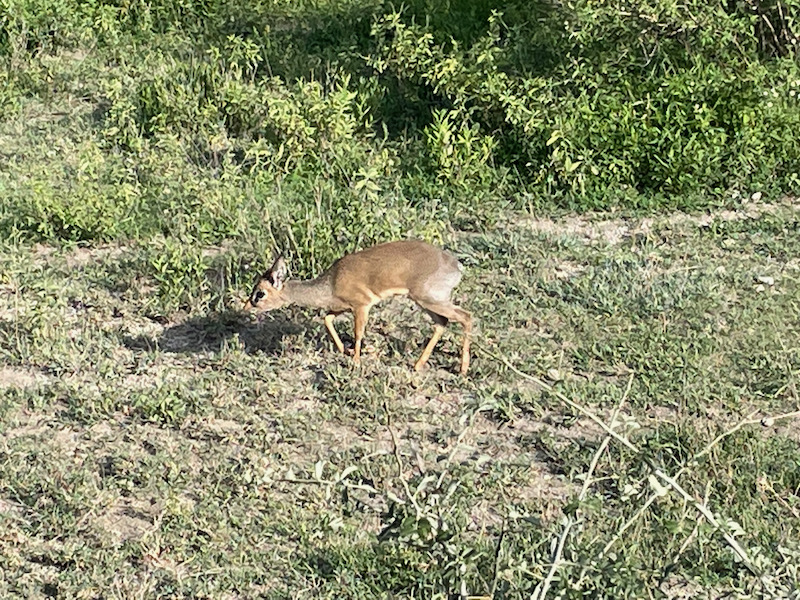
Then we headed towards our home for the next 2 nights, and we saw some elands, giraffes, ostriches, vultures, and Thomson gazelles.
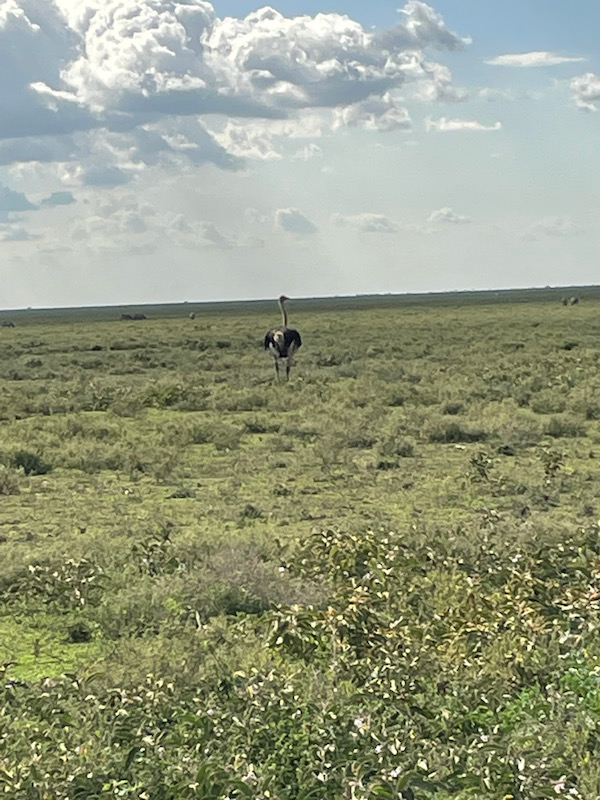
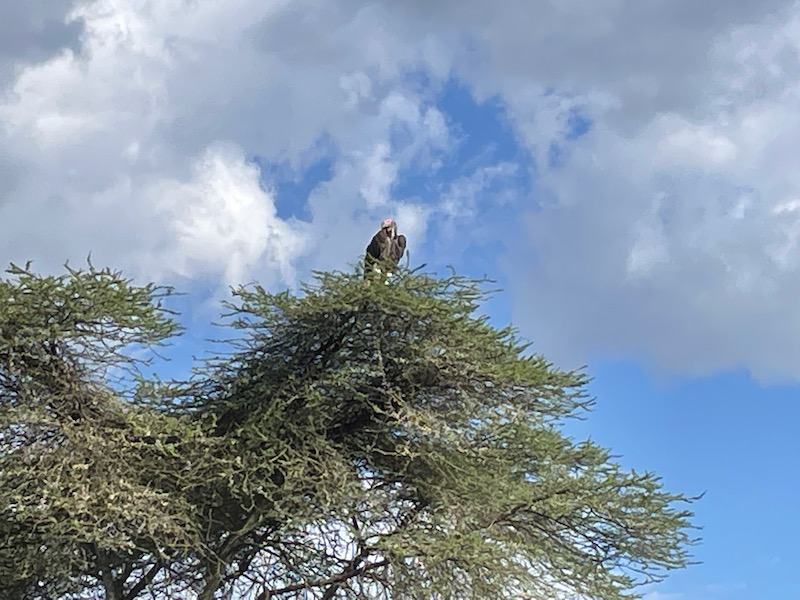
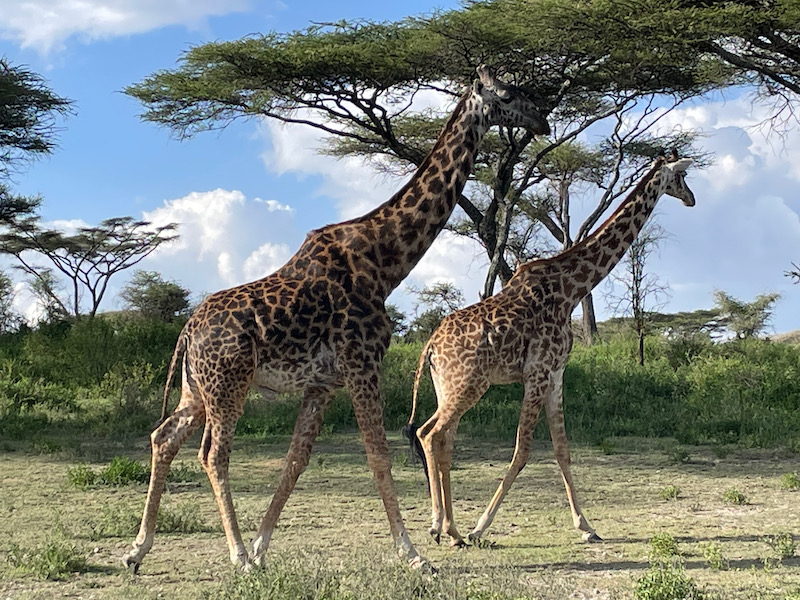
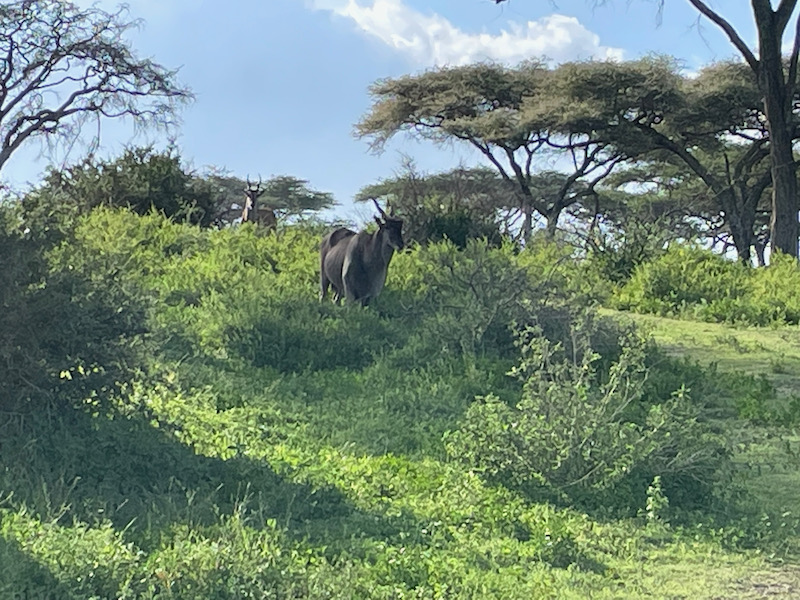
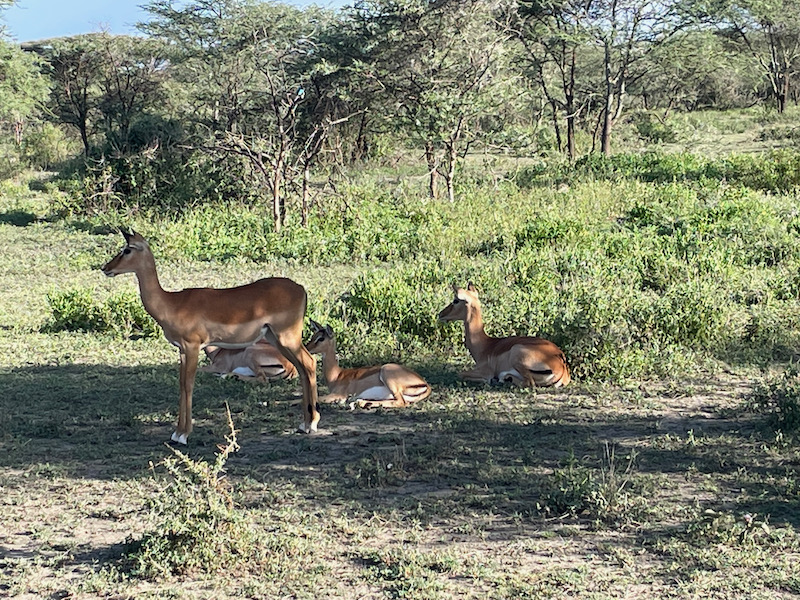
We decided that we wanted to try one night in a tented camp, and so we chose the Nyikani Migration Camp in Ndutu. Staying inside the park has its benefits, since it reduces the time from the start of the game drive to when you start seeing animals. This one is a "migration" camp, so it is a temporary camp which is packed up and moved twice a year. From December to March, it is here and then from May to October, it moves way up north near the Mara River to take advantage of the wildebeest migration river crossing. As we arrived, we relaxed for a few minutes in the bar/lounge while they explained how the camp works and the rules. One of the more interesting items: you aren't allowed to walk unescorted after dark. So for dinner, you have to use a walkie-talkie and call for an escort. At first it seemed an odd requirement, but then we saw zebra walking through the camp, and the first night, we heard various wild animals quite close, so then it made a bit more sense.
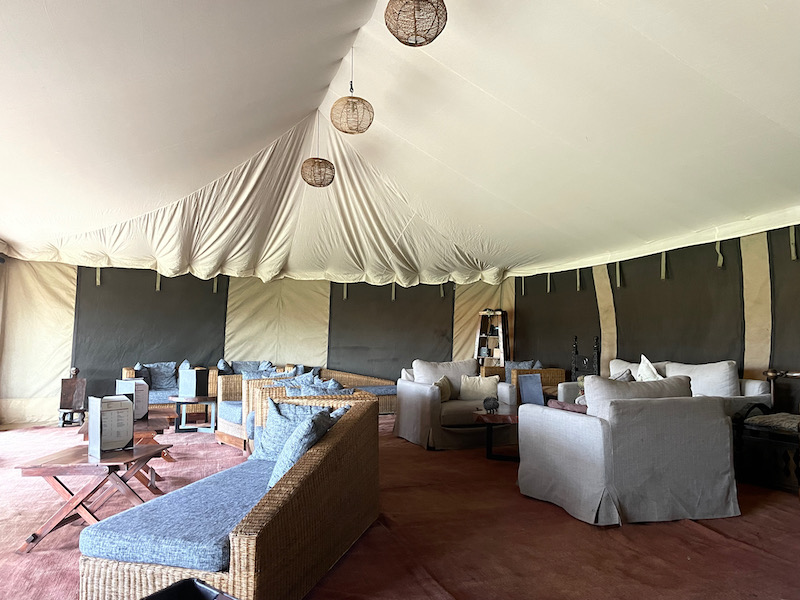
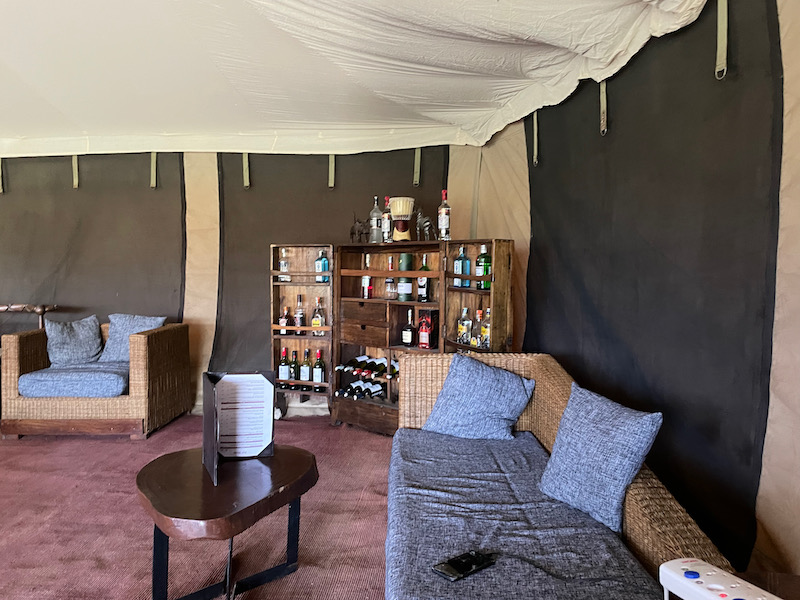
It is a tent but definitely not like the tents that I stayed in when I was a kid! Behind the headboard is the bathroom, where there were 2 sinks with running water (cold only) and a normal toilet.
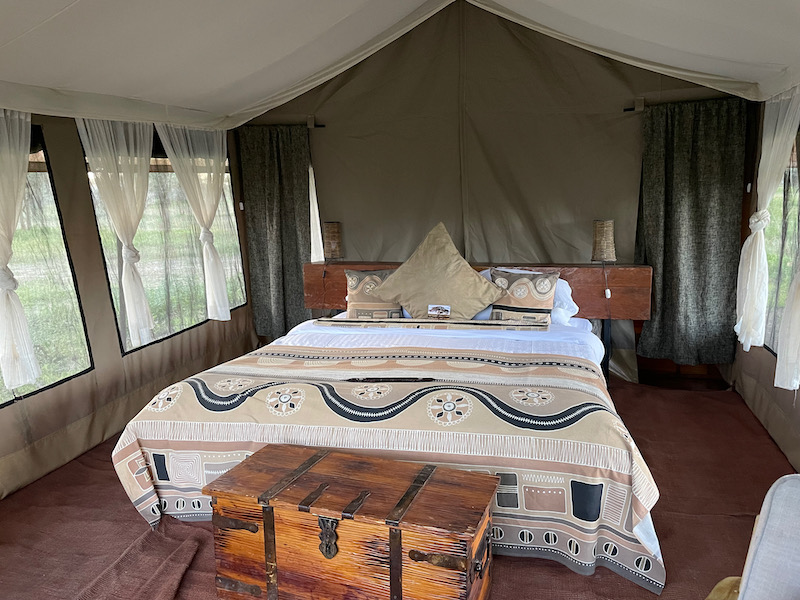
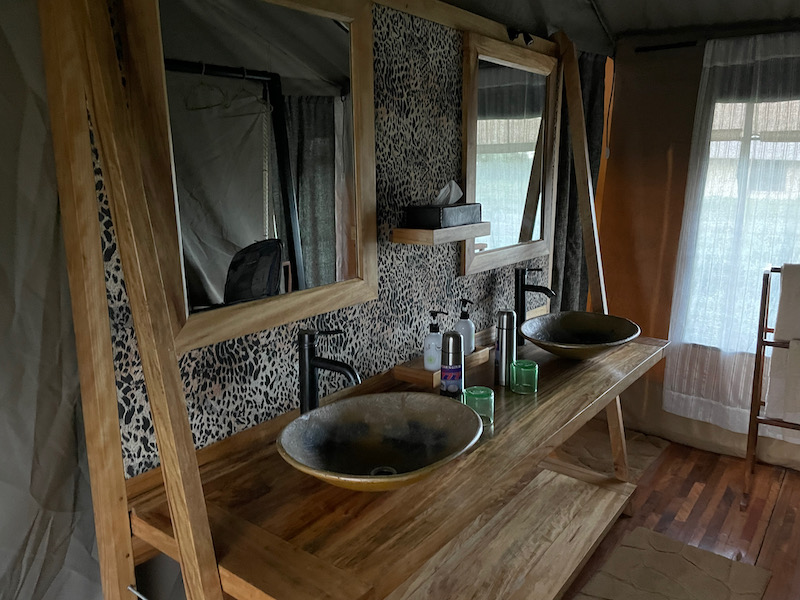
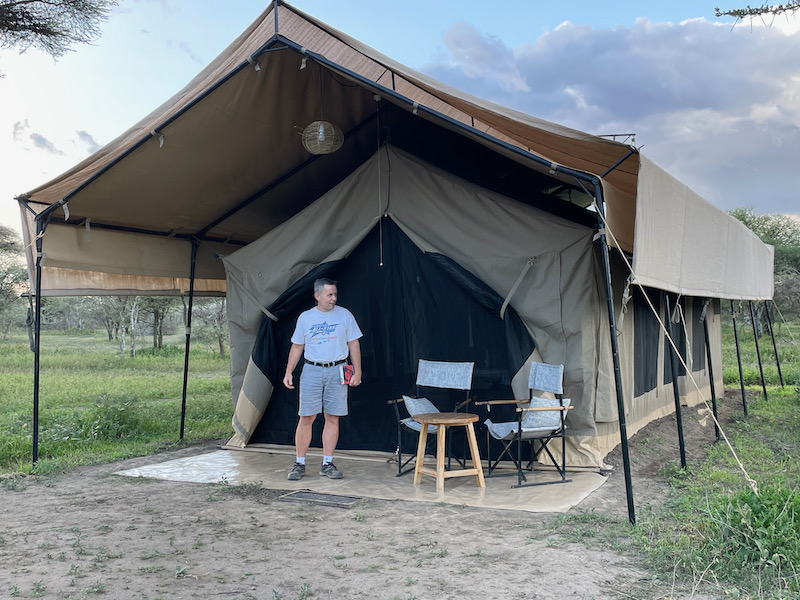
There was a "bush shower", which also ended up getting a little bit of explanation. Inside, there was the shower-head with a pull-chain. I also mentioned that the running water in the tent was cold water only. We told them what time we wanted a shower and at that time, one of the guys would heat the water and carry over a bucket. Then they bring down the shower bag, fill it up with the hot water, and then hoist it back up above the shower. They tell you it is ready and then he WAITS outside of the tent. If you run out of water and need another bucket, you just yell to him on the other side of the tent. The showers are available from 6am to 8pm, because it isn't safe for the guy walking around with the hot water in the bucket when it is dark and there are wild animals around.
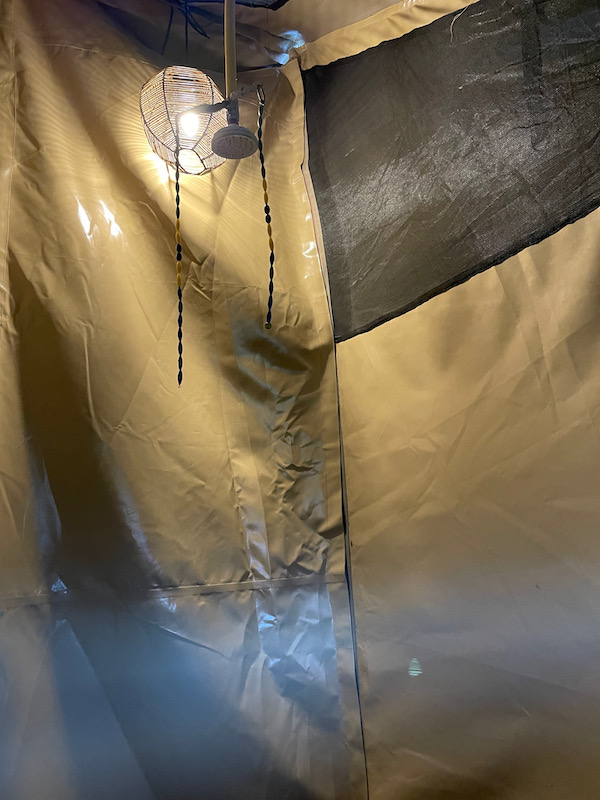
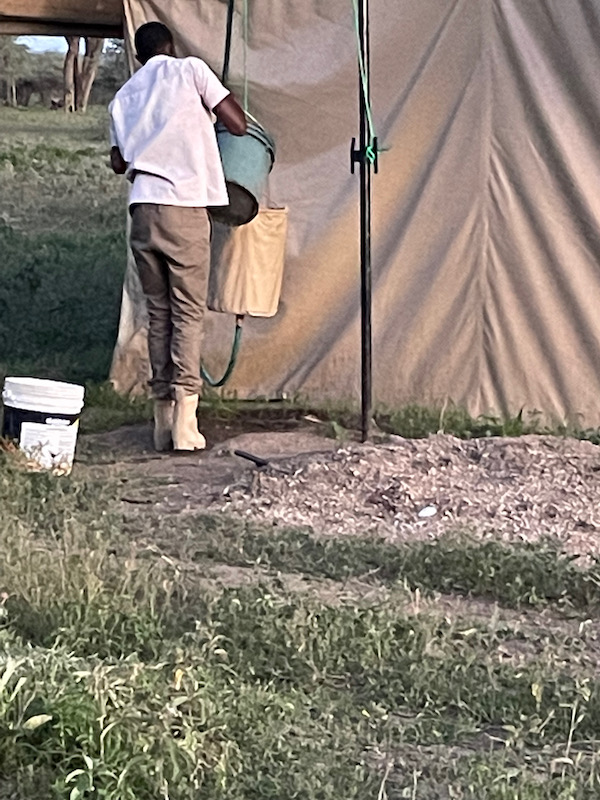

We decided to have a drink and some munchies before dinner, and while we were sitting there, a group of zebras decided to walk right by the tents and through the middle of the camp where there was a little fire-pit. Part of the introductory information was a little joke ... he said that the fire-pit is the "camp tv" but it only has 2 channels: fire and smoke. ha ha ha
